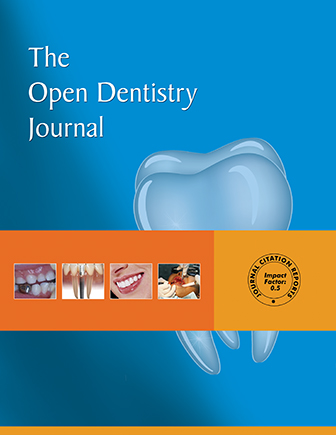All published articles of this journal are available on ScienceDirect.
Augmenting Preventive Dentistry with AI: From Smart Toothbrushes to Real-Time Plaque Analysis
Letter to Editor
Advances in Artificial Intelligence (AI) have revolution-ized the field of preventive dentistry by enabling better out-comes for patients through efficient diagnostics and pers-onalized treatment approaches. Examples include intelligent toothbrushes powered by AI and advanced plaque-analysis systems that present the real-time position of plaque, allo-wing a quick transition to personalized, data-oriented care. AI-toothbrush-enabled apps collect patients’ brushing habits over multiple sessions, opening new horizons in dental care. Research has shown that a Three-Dimensional (3D) motion-tracking toothbrush greatly enhances plaque control in children. Such 3D motion-tracking toothbrushes use algori-thms to detect brushing patterns, duration, and missed areas during brushing, thereby promoting better oral hygi-ene practices [1]. Another study introduced a deep learning-powered Internet of Things (IoT) toothbrush that collects real-time data and monitors oral health continuously, mar-king a paradigm shift in dental health technology [2]. Essen-tially, the IoT toothbrush is designed for self-use by adults and children at home, with a user hierarchy potentially ex-tending from educators to professionals who use this device for monitoring purposes.
AI-imaging technology also scrutinizes plaque deposition precisely. Such equipment helps the users to concentrate on neglected and unapproachable areas of plaque deposits. Re-search published in 2024 revealed that real-time monitoring using AI improves patient adherence to preventive regimens and thereby decreases periodontal disease incidence [3]. Augmented Reality (AR) overplays real-time visuals to assist the patients during brushing, thereby enhancing the tech-nique and their interest. A review published in 2024 high-lighted that the AR-based system heightens motivation for improving oral health status in the young age group [4]. On the other hand, Virtual Reality (VR) is also very useful in simulative studies conducted to train students and for the description of the patient's condition.
AI algorithms also analyze enormous amounts of data to determine early signs of oral diseases, such as caries and gingivitis. For instance, Convolutional Neural Networks (CNNs) are used in imaging to detect subtle anomalies so that intervention can be made in a timely manner. A study conducted in 2022 by Hussein et al. revealed that AI can predict the progression of disease and recommend specific prevention strategies [5]. Besides the use of a toothbrush, wearable technologies that include oral health monitors and intraoral cameras are linked to AI platforms that assess oral health in real time. These devices continuously monitor pH changes, bacterial activities, and markers of inflammation that provide a comprehensive view of oral health. AI-based chatbots and voice assistants interact with patients in real-time, offering oral care tips, reminders, and personalized advice. According to research, AI-powered tools improve patient compliance by offering dynamic educational content and interactive support [6]. By aggregating data from smart devices, AI can identify patterns in oral hygiene habits and health outcomes. Research published in 2021 discussed the use of predictive modeling to suggest specific interventions for individual patients, thereby optimizing preventive stra-tegies [7].
However, high costs and accessibility issues have promp-ted efforts to develop open-source AI models, integrate AI with existing low-cost dental applications, and apply govern-ment-based subsidies to deliver AI tools for public health clinics. Multistakeholder collaborations are ongoing to narrow the technological gap between high- and low-income regions. Regarding patient data protection, AI systems must implement robust encryption protocols, data anonymization techniques, and comply with global regulations, such as the Health Insurance Portability and Accountability Act (HIPAA) and the General Data Protection Regulation (GDPR). Additi-onally, methodologies like federated learning are increa-singly being applied to maintain data privacy among partner institutions while enabling collaborative model training [8].
Although AI has transformed preventive dentistry, some challenges, like affordable health care and access to care in rural and underserved areas, exist, along with ethical issues over the use of sensitive health information. Other chal-lenges include absolute protection of patient data while coll-ecting and analyzing oral health information, dependence on technology, diagnostic inaccuracies, and harm to patient’s autonomy arising from AI-based clinical decision-making. Preliminary findings have proven improved compliance of the population in oral hygiene; however, large-scale longi-tudinal studies are warranted to validate and prove sus-tained benefits and disease reduction in large populations. There is now an increased urgency for joint responsibility among researchers, clinicians, and technologists to develop inclusive, ethical, and sustainable AI solutions for oral health.
Another significant consideration warranting balanced discussion is that AI is still evolving. A recent study ass-essing ChatGPT’s accuracy, completeness, and reliability in dentistry found that ChatGPT was accurate only about 50% of the time. This underscores the need for further improve-ments and stringent validation before any widespread clinical implementation of AI tools in dentistry [9].
CONCLUSION
AI is no longer a myth; it has now become a virtual reality in the field of preventive dentistry. Intelligent tech-nologies, real-time diagnostics, and individualized care stra-tegies are among the innovations that will drive a paradigm shift toward significantly improved oral health outcomes and a long-term reduction in the global burden of oral diseases compared to traditional methods [10].
AUTHORS’ CONTRIBUTIONS
The authors confirm their contributions to the paper as follows: A.A. and A.G.: Draft manuscript; M.K.: Conceptua-lization. All authors reviewed the results and approved the final version of the manuscript.
LIST OF ABBREVIATIONS
| AI | = Artifical Intelligence |
| IoT | = Internet of Things |
| VR | = Virtual Reality |
| AR | = Augmented Reality |
ACKNOWLEDGEMENTS
Declared none.


